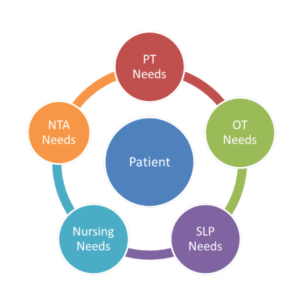CBO releases budget projections, including those for Medicare
The federal budget will “hold steady,” in relation to the size of the economy, through 2018, according to “Budget and Economic Outlook: 2015 to 2025,” [PDF] newly released by the Congressional Budget Office (CBO). After 2018, however, the gap between spending and revenue may grow.
CBO projects that outlays will increase from about 20 percent of the gross domestic product (GDP) this year—which it says has been the approximate level for the past 50 years—to about 22 percent in 2025. The retirement of baby boomers, expansion of federal subsidies for health insurance, increasing healthcare costs per beneficiary (including for the Medicare and Medicaid programs) and increasing interest rates on federal debt will cause the increase, according to the CBO.
Medicare outlays last year, however, continued to grow at a modest rate, the report authors note. “In total, outlays for that program rose by $14 billion (or 2.8 percent) last year, slightly higher than the rate of growth in 2013 (after adjusting for a shift in the timing of certain payments) and less than the rate of growth in the number of Medicare beneficiaries,” they wrote. “Over the past four years, Medicare spending has grown at an average annual rate of only 3.1 percent, compared with average annual growth of 3.6 percent in the number of beneficiaries.”
The office estimates that outlays for Medicare will continue to grow slowly this year, increasing by $17 billion (or 3.4 percent), assuming that physician fees are reduced by 21 percent as scheduled. “The projected growth rate is a little higher than last year’s rate but about half the average annual increase of roughly 7 percent experienced between 2003 and 2013,” they write. If physician fees are kept at their current levels instead of been reduced, then Medicare spending this year will be $6 billion higher than the amount projected in CBO’s baseline, the report authors say.
CBO’s baseline for federal spending includes the projection that federal outlays for major healthcare programs (Medicare, Medicaid, health insurance subsidies and the Children’s Health Insurance Program) will increase from 5.1 percent of GDP this year to 6.2 percent in 2025 (net of premium payments and other offsetting receipts for Medicare).
Gross federal outlays for Medicare, Medicaid and other major healthcare-related programs, at $926 billion last year, accounted for 39 percent of gross mandatory spending and equaled 5.4 percent of GDP (not including income from premiums paid by Medicare beneficiaries and other offsetting receipts). Under current law, CBO estimates, gross federal outlays for those programs will increase to $1 trillion, or 5.6 percent of GDP, this year. “In CBO’s baseline projections, that spending grows robustly—at an average rate of nearly 7 percent per year—and thus nearly doubles between 2015 and 2025, reaching $1.9 trillion, or 6.8 percent of GDP, by the end of that period,” the report authors note.
Gross spending for Medicare will total $622 billion this year, CBO estimates, or 3.5 percent of GDP, the same share as last year. By 2025, the program’s spending will reach nearly $1.2 trillion, or 4.3 percent of GDP, if current laws remain in place.
Offsetting receipts—mostly in the form of premiums paid by Medicare beneficiaries—will increase from $99 billion this year to $199 billion in 2025, according to the CBO’s baseline projections. Under current law, the CBO estimates that spending for Medicare net of those offsetting receipts will be 2.9 percent of GDP this year and 3.6 percent in 2025.
The comparatively slow growth in per-beneficiary spending that CBO projects for the next decade results from the anticipated influx of new beneficiaries, which will reduce the average age of Medicare beneficiaries and, most likely, the average healthcare costs per beneficiary; the slowdown in the growth of Medicare spending across all types of services, beneficiaries and major geographic regions in recent years; and the constraints on service payment rates that are built into current law.
“Despite the relatively slow growth in per-beneficiary Medicare spending projected over the next 10 years,” the report authors note, “net federal spending per beneficiary for Parts A and B is projected to grow by 38 percent. Net federal spending per beneficiary for Part D, which accounts for a small share of total Medicare spending, is projected to grow much more—by 77 percent—largely because of rising drug costs combined with provisions in the ACA that expand the extent of coverage for some prescription drugs.”
I Advance Senior Care is the industry-leading source for practical, in-depth, business-building, and resident care information for owners, executives, administrators, and directors of nursing at assisted living communities, skilled nursing facilities, post-acute facilities, and continuing care retirement communities. The I Advance Senior Care editorial team and industry experts provide market analysis, strategic direction, policy commentary, clinical best-practices, business management, and technology breakthroughs.
I Advance Senior Care is part of the Institute for the Advancement of Senior Care and published by Plain-English Health Care.
Related Articles
Topics: Executive Leadership , Medicare/Medicaid











